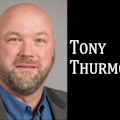Power of competency checklists for Sterile Processing
It’s important to assess how competencies are used in the Sterile Processing (SP) profession. Are they viewed as a necessary evil or do SP professionals embrace the opportunities competencies can provide? ANSI/AAMI ST79, Section 4.2.2, states that “the responsibility of sterile processing should be assigned to qualified individuals who have demonstrated competence in all aspects of sterile processing.”
Document learned skills
Qualifications of SP professionals include demonstrated knowledge of and documented competencies in the tasks they perform as well as working knowledge of the SP environment. “Documented” is an important distinction because if it is not documented, there is no evidence that proper training and demonstration of that training occurred. Undoubtedly, surveyors will ask to see the orientation checklist for an employee as well as further documented competencies for each employee.
A competency checklist must be developed and maintained in each of the following SP areas:
1. Decontamination: Competency must be shown in sorting, disassembling/reassembling, manual and mechanical cleaning methods, microbicidal processes, equipment operation, standard- and transmission-based precautions, and engineering and work practice controls.
2. Instrumentation: SP professionals must know the names and descriptions of instrumentation, and the inspection points of each instrument. Other competencies include proper preparation and packaging methods for sterilization.
3. Sterilization/High-level disinfection (HLD): Competencies should cover all sterilization practices and principles, including steam, low temperature, ethylene oxide, and HLD processes.
4. Worker safety and environmental safety: SP professionals should be able to demonstrate how to properly handle emergent situations, environmental hazards and other patient safety scenarios.
More competencies can be developed for specific equipment and instrumentation and can include proper cleaning techniques, sterilization and maintenance of each. It’s important to recognize that a completed competency does not ensure a technician is competent. The proper skills learned and used effectively in day-to-day operations are what make for a competent technician. During the competency review, some technicians may correctly demonstrate how to perform a task, but then return to their bad habits after the review.
Start with new employees
Competency checklists may vary for each department and equipment. Department design will dictate processes and workflow necessary for competencies to be completed. An orientation checklist, used for new hires in the department, should come first. The new employee should work with a competent technician who is willing to train and has the necessary skills to properly onboard the new team member. The orientation checklist is typically completed after 90 days of employment to help verify the skills learned.
If the employee has demonstrated they have retained the training information provided and demonstrates a willingness to continue building upon their skills, this should be documented during the 90-day period. If areas of weakness or areas where the information was not retained are noted, the supervisor should review the training process. The supervisor may need to review the preceptor or trainer to determine whether the proper information was given and whether there is an area in the training process that could use some improvement.
If no areas of improvement are needed in the training process and the preceptor is providing proper, effective training, it must then be determined whether the new hire can be successfully trained and prepared for their role. Every employee learns at their own pace, but they must demonstrate the desire to learn and do their best if they are to move past their 90-day review and continue to grow in the role. It is recommended that the employee both verbalize and demonstrate the task(s) being evaluated. Upon completion of the onboarding process and 90-day review, if the employee fails to grasp the information and shows little sign of succeeding in the role, it is best to reconsider their employment.
Review and repeat
An effective competency checklist is thorough and written in the order of the process or workflow of the desired skill being reviewed. Each item to be reviewed must be well understood and/or demonstrated. The checklist should indicate whether the demonstration is verbal or physically carried out, and the task must be marked as satisfactory or unsatisfactory (with each task initialed by the person reviewing it). Competency checklists should also include an area for comments that can highlight suggested training or positive feedback for employees who demonstrated aptitude with a particular task. Competency reviews of each technician must be reviewed by a competent technician, educator or manager who also has demonstrated working knowledge and expertise of the area being reviewed/assessed. The checklist must be signed by both the evaluator and the individual being evaluated. After the review, the competency must be placed in the employee’s file where it can be accessed for review as needed.
At minimum, the checklists should be reviewed every six months to determine areas in need of improvement, and managers should ensure the checklist is current and factors in any equipment changes or standards updates that could impact current practices. Actual completion of competency checklists should be done at least once a year (more often if a process is complex). If an increase in errors occurs, it is prudent to perform a competency and checklist review to help identify areas in need of attention. Note: Competency checklists may be developed from instructions for use of SP-related products or equipment, or from published standards such as those from the Association for the Advancement of Medical Instrumentation (AAMI), the Association of periOperative Registered Nurses (AORN) and others. IAHCSMM provides some examples of competency checklists for its members on its website that can be tailored to individual SP departments. Visit: https://www.iahcsmm.org/resource-documents/cs-sample-documents.html.
About the Author

Tony Thurmond, CRCST, CIS, CHL
Tony Thurmond, CRCST, CIS, CHL, is Central Service Manager at The Christ Hospital Health Network in Cincinnati, Ohio, and also serves as IAHCSMM’s President (2019-2020).
